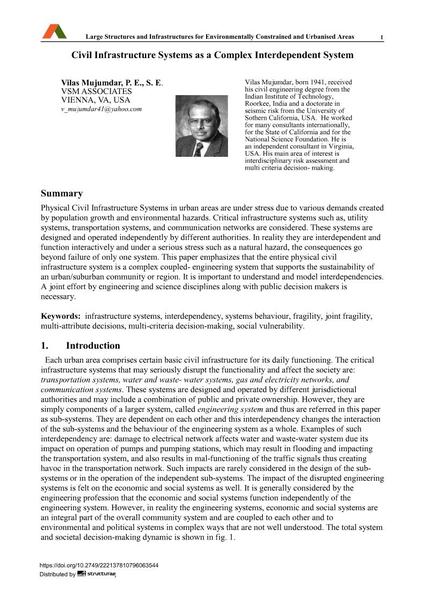Civil Infrastructure Systems as a Complex Interdependent System

|
|
|||||||||||
Détails bibliographiques
| Auteur(s): |
Vilas Mujumdar
|
||||
|---|---|---|---|---|---|
| Médium: | papier de conférence | ||||
| Langue(s): | anglais | ||||
| Conférence: | IABSE Symposium: Large Structures and Infrastructures for Environmentally Constrained and Urbanised Areas, Venice, Italy, 22-24 September 2010 | ||||
| Publié dans: | IABSE Symposium Venice 2010 | ||||
|
|||||
| Page(s): | 742-743 | ||||
| Nombre total de pages (du PDF): | 8 | ||||
| Année: | 2010 | ||||
| DOI: | 10.2749/222137810796063544 | ||||
| Abstrait: |
Physical Civil Infrastructure Systems in urban areas are under stress due to various demands created by population growth and environmental hazards. Critical infrastructure systems such as, utility systems, transportation systems, and communication networks are considered. These systems are designed and operated independently by different authorities. In reality they are interdependent and function interactively and under a serious stress such as a natural hazard, the consequences go beyond failure of only one system. This paper emphasizes that the entire physical civil infrastructure system is a complex coupled- engineering system that supports the sustainability of an urban/suburban community or region. It is important to understand and model interdependencies. A joint effort by engineering and science disciplines along with public decision makers is necessary. |
||||
